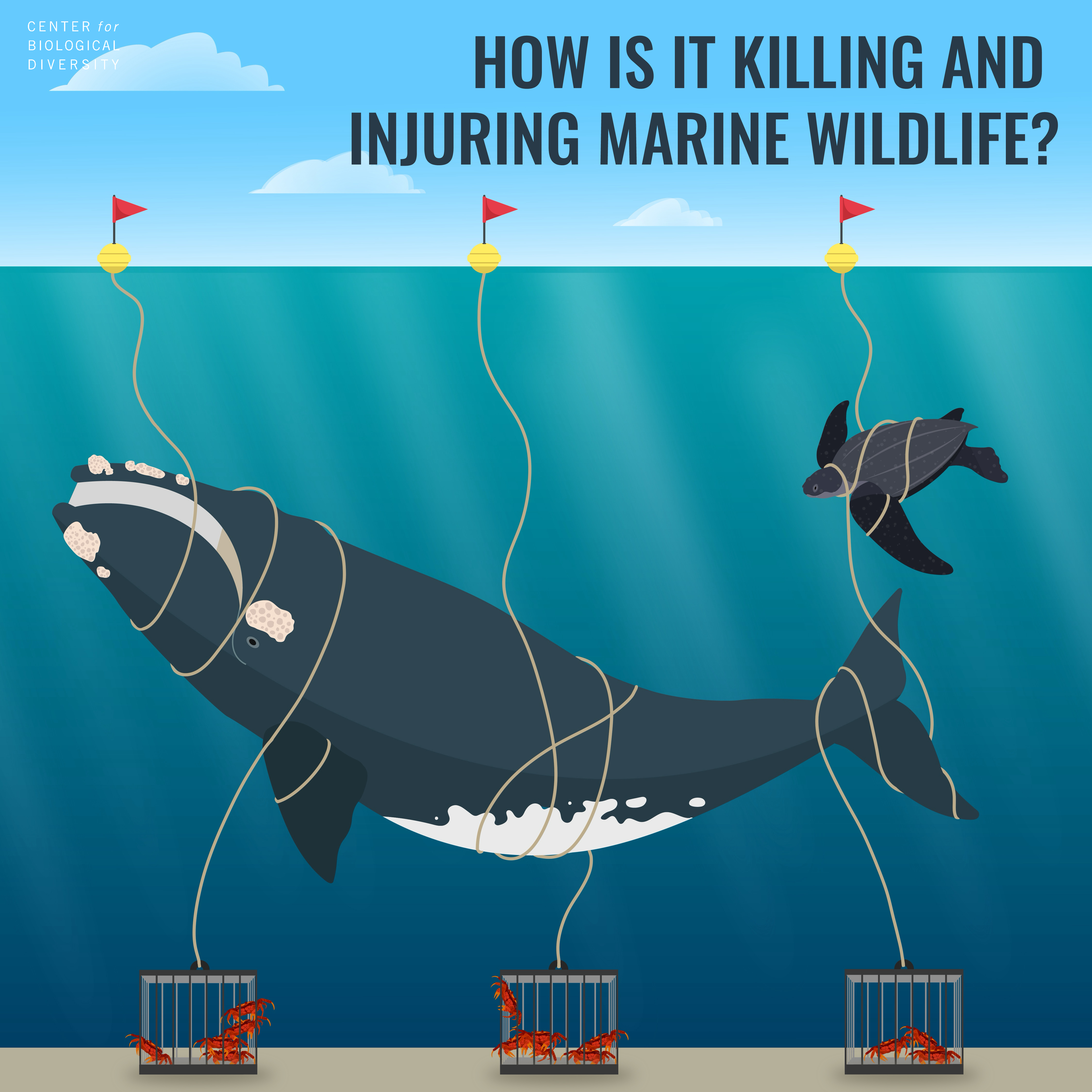Ropeless Fishing Gear
Entanglement in fishing gear is a leading threat to endangered whales and sea turtles. Trap fisheries, like California’s commercial Dungeness crab and New England lobster fisheries, are threatening critically endangered populations of right whales, humpbacks, blue whales and leatherback sea turtles.
But new fishing gear could finally eliminate the entanglement risk: ropeless or pop-up fishing gear.
The Problem
Right now, most trap fisheries place thousands upon thousands of strong, thick ropes in whale and sea turtle habitat. These ropes run through the water, connecting buoys on the water’s surface to heavy traps on the sea floor. Those ropes get caught on whales’ mouths, fins or tails, cinching down and cutting into their flesh as they drag the heavy traps, sapping their strength and eventually drowning them. If they don’t drown, entanglements can prevent the whales from feeding, leaving them to slowly starve to death, or can cause so much stress that they can’t reproduce. Sea turtles can suffer similar fates.
Our Campaign
Federal and state officials have responded to rising numbers of entanglements on the East and West coasts with partial or temporary fishery closures, new reporting and monitoring requirements, and statements of concern. None of it has eliminated the entanglement risk. And in fact, for some species — like North Atlantic right whales — entanglements are not only impeding their recovery, but actively driving them toward extinction.
Conversion to ropeless gear would finally solve the entanglement problem, which is why the Center is petitioning the federal government to require trap fisheries to convert to ropeless gear by 2026. Learn more about our work to save species from destructive industrial fisheries and check out our press releases to read about the Center's actions related to ropeless fishing gear.
How It Works
Pop-up traps use lift bags or buoys attached to rope stored at the seafloor in bags, containers or coiled around a spool. Remote sensors trigger the bags or buoys to float to the surface, bringing the traps along with them — and eliminating unattended vertical lines.
Several kinds of ropeless fishing gear are available and being tested off the U.S. West and East coasts and in Canada. Fishermen who have tested the gear report that it works. Some fishers in Australia already fish without risking deadly entanglements.
The technology underlying the gear has existed for decades and is used for a variety of oceanographic purposes.
The National Marine Fisheries Service, or NOAA Fisheries, acknowledges that fishing gear entanglement is a top threat to many endangered whales and has called ropeless gear “game changing” and “a future solution to whale entanglement.”
The first step toward reaching that future is recognizing that entanglements present a clear and escalating danger to whales, sea turtles and other marine life. That danger will remain a long as entangling ropes remain in the water. The future of trap fisheries is ropeless gear, and that future should start now.



